The AALU WRNewswire 17-13 and WRMarketplace are published by the Association for Advanced Life Underwriting® as part of the Essential Wisdom Series, the trusted source of actionable technical and marketplace knowledge for AALU members—the nation’s most advanced life insurance professionals.
Thursday, March 30 2017 WRM#17-13
TOPIC: It’s Déjà Vu: Planning (Again) in the Face of Uncertainty – Estate Freeze Series: Installment Sales to Grantor Trusts.
MARKET TREND: With low interest rates and uncertainty persisting, estate freeze techniques, like installment sales to grantor trusts (ISGTs), continue to play a key role in legacy planning.
SYNOPSIS: The ISGT transfers appreciating assets to the next generation without capital gains taxes and allows the assets to grow in a grantor trust without reduction for income taxes. As a trade-off, the grantor must relinquish control over the assets sold to the trust while retaining liability for the payment of the trust’s income tax obligations. The approach, however, is suited to today’s planning, since the interest rate on the installment note can track currently low applicable federal rates, and the family only moves future appreciation off its balance sheet. The ISGT’s unique features, including grantor trust taxation, substitution powers reserved to the grantor, and the use of formula clauses to adjust the value transferred, create opportunities to optimize the trust’s probability of success.
TAKE AWAYS: With proper planning, implementation, and monitoring, ISGTs can help preserve illiquid assets, like family businesses, for multiple generations. Key components to a successful ISGT, especially given IRS interest in such transactions, include ensuring that the value of the installment note matches the fair market value of the assets sold, evidencing that the trust has sufficient ability to re-pay its obligations, and ensuring that the parties respect and comply with the note terms and payment requirements.
PRIOR REPORTS: 17-10, 15-09, 14-13.
An installment sale between a grantor (a trust creator) and a grantor trust is an “estate freeze” technique that has long been used in legacy management and succession planning to transfer appreciating assets to a trust for the next generation. As discussed in WRMarketplace No. 17- 10, legacy planning advisors are using “estate freeze” techniques like ISGTs to capitalize on currently low interest rates and an uncertain tax environment.
WHAT IS AN INSTALLMENT SALE TO A GRANTOR TRUST?
With an installment sale to a grantor trust (ISGT), a grantor sells, for fair market value (FMV), appreciating but potentially illiquid assets, such as a family business, to a grantor trust in return for an installment note. The sale effectively preserves the assets for the next generation by removing the asset and its appreciation from the grantor’s estate and replacing it with a non- appreciating, interest-bearing note.
Since the sale is to a “grantor trust” for federal income tax purposes with regard to the seller, the sale is disregarded for income tax purposes and does not generate recognizable income or gain to the seller. Further, appreciation in the asset sold to the trust will not incur estate tax at the grantor’s passing. If the grantor dies during the note term, however, the note’s value will be includible the grantor’s estate. Thus, the term of the note should be less than the grantor’s anticipated life expectancy.
Assuming the note’s value equals the FMV of the assets sold, the ISGT should not constitute a taxable transfer for federal gift or generation-skipping transfer (GST) tax purposes. To avoid making an unintended gift, however, the note must charge sufficient interest, for example, at the applicable federal rate (AFR) in effect for the month of the sale. Also, the grantor generally will need to make a “seed” gift to the grantor trust or find other methods (such as personal guarantees from the beneficiaries or other parties) to capitalize the trust before the sale to show that it can meet its note obligations.
WHY USE AN ISGT NOW?
Maximize Gift & GST Tax Exemption. ISGTs are designed to capitalize on the use of the grantor’s gift and generation-skipping transfer (GST) tax exemptions (each at a maximum exemption of $5.49 million in 2017). A seed gift removes assets from the grantor’s estate and helps evidence the economic viability of the sale, allowing the sale itself to reduce the grantor’s taxable estate to an even greater degree. Additionally, because the seed gift is a completed gift for transfer tax purposes, the grantor can allocate his GST tax exemption to the seed gift, making the trust a fully-GST exempt dynasty trust for multiple generations.
Appreciation. An ISGT transfers future appreciation in excess of the purchase price and interest to the trust beneficiaries. The initial asset value, along with interest at the AFR, is returned to the grantor, providing the grantor with an income stream and alleviating concerns about transferring too much wealth to maintain the grantor’s current lifestyle.
Rising AFRs. As a floor, interest rates for an ISGT must be set at the AFR for the month of the sale, based on the term of the note. AFRs may rise as the Federal Reserve Board continues to raise its benchmark interest rates. As discussed in WRMarketplace 17-11, even relatively minor increases in the AFR can have a significant effect on the overall economics of this approach.
Example: Ted, the owner of FamCo, funds a dynasty, grantor trust with a seed gift of $1 million and sells $9 million of FamCo interests to the trust for a 15-year promissory note bearing annual interest at the rate of 2.82%. Ted will receive annual payments of interest and principal equal to $744,118. If the AFR increases by just 0.5%, to 3.32%, however, the annual note payments to Ted riseto $771,456, amplifying the interest paid to Ted. Overall, this higher payment will ultimately reduce the assets that will remain in the trust for the beneficiaries at the end of the note term by $742,289.
The likelihood of increased interest rates, together with the availability of high gift and GST tax exemptions, makes now a prime time for ISGT implementation to lock-in the currently low AFRs and make large seed gifts.
HOW TO OPTMIZE?
Numerous factors can impact the success of an ISGT, including the use of a grantor trust, the availability of a substitution power for the grantor, proper structuring as a bona fide sale, timing of the sale, and the type of assets purchased.
Grantor Trust Status. Key to the ISGT is the characterization of the trust as a grantor trust for federal income tax purposes. Such status allows the grantor to sell assets to the trust without capital gains taxes or income tax on the interest paid under the note. Further, because the grantor pays the tax on the trust’s income, the trust’s growth is not reduced by this liability, potentially enhancing the trust’s value over time.
Example: Using the same facts for Ted’s sale of FamCo above, assume that the AFR is 2.82% and the acquired assets have an annual rate of return of 8%. At termination of the note, the trust will hold $11,517,319. If the trust continues as a grantor trust for an additional 5 years after termination of the note (until Ted passes in year 20), the trust will hold over $16.9 million, compared to just over $14.9 million if grantor trust status terminated in year 15.i
Substitution Power. While there are many powers which, if retained by the grantor, will make the trust a grantor trust, the power to substitute trust assets for other assets of equivalent value generally provides the most flexibility. If the ISGT provides the grantor with this power, he can exercise the power to either rescue an underperforming ISGT or lock-in the gains of a successful ISGT while obtaining a stepped-up basis on the assets reacquired from the trust at death.
Example: Continuing the above example, assume that the grantor trust acquired the FamCo interest at a zero basis. If Ted reacquires that FamCo interest for cash in year 15 when the value of the trust’s interest is $11,517,319, the value of the trust estate will be locked in. Further, if Ted still holds the FamCo interests at his death, the interests will receive a stepped-up basis, potentially saving $2,741,122 in capital gains and net investment income taxes.
Bona Fide Sale. Ensuring the sale to the trust is bona fide and for full and adequate consideration is vital to a successful ISGT. Otherwise, the difference between the value of the asset sold and the deemed value of the note will be considered a gift from the grantor to the grantor trust, causing an immediate gift tax. Factors that the sale is bona fide and for full and adequate consideration include: (i) the ability of the grantor trust to pay the debt, (ii) the grantor trust has other assets that can be reached in the event of a default, and (iii) there is a reasonable expectation of payment of the debt and an intent to enforce collection at the time of the sale.
Seed Gifts. As noted above, to evidence the ability of the grantor trust to pay the debt and to show that the grantor trust has other assets that can be reached, the grantor typically makes a “seed” gift to the grantor trust before the sale. The general rule of thumb is 10% of the purchase price of the assets to be acquired from the grantor. Ideally, cash would be used for the seed gift. Cash gifts can also provide a cushion for payments under the note.
Guarantees. If the grantor does not have adequate assets or resources for a seed gift, individual guarantees issued by the trust beneficiaries or others may provide a reasonable expectation that the note will be repaid. Guarantees are typically issued for 10% of the value of the note, and the guarantor usually is paid an annual fee. For a guarantee to work, the guarantor must have the ability to pay the guarantee if called upon to do so – if the guarantor does not have sufficient assets to back up the guarantee, the guarantee may be deemed illusory.
Formalities. For the ISGT to be successful, the grantor and the trust MUST follow all entity, trust, and transaction-based formalities, or risk having the IRS re-characterize the entire transaction as a gift or includible in the grantor’s estate.
Interest-Only Note Payments. The installment note can be structured to require interest-only payments with a final balloon principal payment, which may help minimize the need for in-kind distributions to satisfy note payments (particularly if a future liquidity event is anticipated) and maximize the assets remaining for trust beneficiaries. As the IRS may view this structure as less conservative than amortizing principal payments, however, it further enhances the importance of satisfying all steps to evidence a bona fide sale, as noted above.
Valuation and Discounts. Selling assets at a discounted value can enhance the probability that the grantor trust will be successful. The selection of assets sold to the grantor trust impacts available valuation discounts. Hard-to-value and/or illiquid assets (such as a family business) may provide the best opportunity for significant valuation discounts, while a limited liability company that holds a portfolio of marketable securities may provide smaller discounts, if any. Disputes with the IRS over asset valuation have become a major focus in the transfer tax arena for ISGT transactions. However, with the uncertainty regarding the proposed Treasury Regulations under Code §2704, traditional valuation discounts for assets sold to a grantor trust should remain available, at least for now.
Use of Formula Clauses. In an ISGT transaction, the purchase price for the asset is its FMV as of the date of the sale. A successful ISGT often will use a defined value formula clause to minimize concerns about later IRS adjustments to the value of the assets transferred. Generally, these formula clauses fall into two categories:
- Formula Allocation Clause. This clause typically allocates the value of the asset transferred among taxable and non-taxable transferees (e.g., charities, spouses, maritaltrusts).
Example: Assuming a value of $1,000 per unit, Joe transfers 5,000 units in JoFam Co as follows: (1) such number of JoFam units having a value of $5 million (i.e., 5,000 units) is sold to a dynasty trust and (2) the balance of JoFam units, if any, is gifted to a public charity. If the gift tax value of each JoFam unit, as finally determined for gift tax purposes, is increased to $1,250, the trust retains 4,000 JoFam Co units (worth $5 million) and delivers 1,000 units to the charity.
Joe has made a completed sale and gift of all 5,000 units, such that a valuation increase only results in an adjusted allocation of the units among the classes of transferees; nothing is allocated to the Joe. Several cases have upheld the use of formula allocation clauses,iialthough administrative complexities and the need for a non-taxable transferee can make the clause somewhat difficult to implement.
- Formula Transfer Clauses. These clauses are simpler than formula allocation clauses and limit the property transferred to a recipient to a fixed dollar amount.
Example: Joe sells a factional share of JoFam Co units to the dynasty trust: $5 million / value of units as finally determined for federal gift tax purposes
An increase in the unit value of JoFam would not change the dollar amount of the sale but would result in Joe transferring fewer units to the dynasty trust. This minimizes the gift tax exposure risk in determining the percentage of property that represents the fixed dollar amount and is simpler than the formula allocation clause, because the formula transfer clause does not require multiple and/or taxable and non-taxable transferees. The U.S. Tax Court upheld a simple formula transfer clause in Wandry v. Commissioner, but the IRS did not acquiesce.
Report the Gift and Sale. To start the limitations period running for the ISGT, the transaction must be reported on the grantor’s gift tax returns and “adequately disclosed” to the IRS. This is particularly important if the transaction is subject to a formula clause, as the values will not be set until the gift tax return is audited or the limitations period expires.
TAKE AWAYS
- With proper planning, implementation, and monitoring, ISGTs can help preserve illiquid assets, like family businesses, for multiplegenerations.
Key components to a successful ISGT, especially given IRS interest in such transactions, include ensuring that the value of the installment note matches the FMV of the assets sold, evidencing that the trust has sufficient ability to re-pay its obligations, and ensuring that the parties respect and comply with the note terms and payment requirement.
i Assumes an annual return comprised of 50% ordinary income and 50% capital gain, taxed at a top income tax rate of 39.6%, a top capital gains rate of 20%, and a net investment income tax rate of 3.8%.
ii McCord v. Commissioner, 461 F.3d 614 (5th Cir. 2006); Est. of Christiansen v. Commissioner, 586 F.3d 1061 (8th Cir. 2009); Est. of Petter v. Commissioner, 653 F.3d 1012 (9th Cir. 2011); Hendrix v. Commissioner, T.C. Memo 2011- 133.






